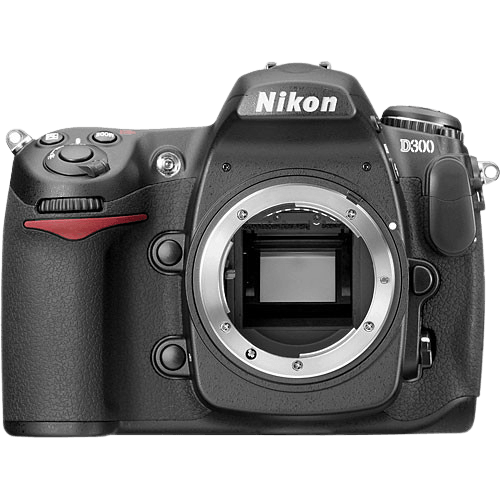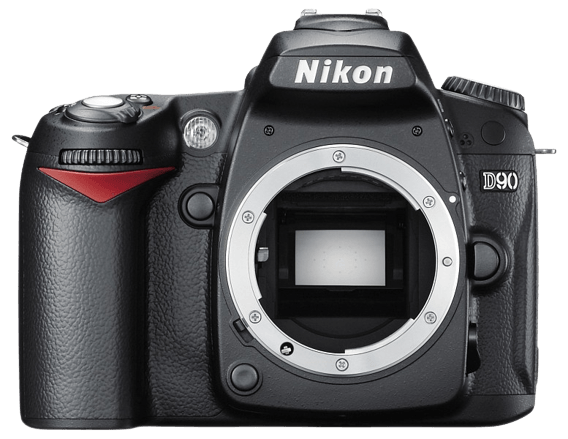Nikon D300 vs D90 Comparison
Nikon D300

Nikon D90

The Nikon D300 comes out on top with a score of 49/100, while the Nikon D90 trails behind with 44/100. Both cameras are DSLRs, released in 2007 and 2008 respectively. They share common features, but the D300 has a few advantages.
The D300 has a sturdier build, measuring 147 x 114 x 74mm and weighing 925g. This makes it more durable, but also heavier compared to the D90’s 132 x 103 x 77mm size and 703g weight. The D300 was launched at a higher price of $1540, while the D90 was more affordable at $1235.
Despite the lower score, the Nikon D90 offers a lighter and more compact option for photographers on a budget. It provides similar performance at a lower price point, making it a suitable choice for those prioritizing cost and portability.
Taking everything into account, the Nikon D300 leads in overall performance and durability, while the Nikon D90 caters to budget-conscious and travel-friendly photographers.
Nikon D300 vs D90 Overview and Optics
The Nikon D300 emerges as the winner in our optics comparison, scoring 47/100, while the Nikon D90 follows closely with a score of 46/100. Both cameras share several specifications, including 12.3 megapixels, a CMOS sensor type, an Expeed processor, an APS-C sensor size, a Nikon F DX lens mount, and a lack of image stabilization.
The D300 outshines the D90 in shooting speed, offering 6 frames per second (fps) compared to the D90’s 4.5 fps. This faster shooting speed allows the D300 to capture more images in a shorter amount of time, which is beneficial for action and sports photography. Additionally, the D300 has a slightly higher overall score for optics, suggesting that the camera produces better quality images.
On the other hand, the D90 has a higher DXOMARK score for its sensor, scoring 73 compared to the D300’s 67. A higher DXOMARK score means that the D90’s sensor performs better in terms of color depth, dynamic range, and low-light performance. This advantage may appeal to photographers who prioritize image quality over shooting speed.
In comparing the optics of the Nikon D300 and D90, the D300’s faster shooting speed and marginally better overall optics score make it the superior choice. However, the D90’s higher DXOMARK score indicates that it may be more suitable for photographers who prioritize image quality. Ultimately, the choice between these two cameras depends on an individual’s specific photography needs and preferences.
Nikon D300 vs D90 Video Performance
In comparing the Nikon D300 and Nikon D90, it is important to address their video capabilities. However, both the Nikon D300 and Nikon D90 lack video functionality. Neither camera has the ability to record video, and therefore, their video scores are not a factor in determining which camera is better.
Nikon D300 vs D90 Features and Benefits
The Nikon D300 emerges as the winner in the feature comparison, scoring 54/100, while the Nikon D90 scores 41/100. Both cameras share several specifications, such as a 3-inch screen size, lack of touchscreen, flip screen, GPS, WIFI, and Bluetooth. Despite these similarities, the Nikon D300 outperforms the D90 in specific areas.
The Nikon D300 has a higher screen resolution of 922,000 dots compared to the D90’s 920,000 dots. This difference in resolution allows the D300 to provide a clearer and sharper image preview on its screen. The D300’s higher feature score also reflects its overall superiority over the D90 in terms of functionality and performance.
However, the Nikon D90 has its advantages. The lower feature score does not necessarily mean it performs poorly in all aspects. For specific users or situations, the D90 might be the preferred choice due to factors such as price, availability, or personal preference. Additionally, the D90 shares many specifications with the D300, making it a decent alternative for those who do not prioritize the D300’s superior screen resolution.
The Nikon D300’s better feature score and screen resolution make it the preferable choice for users seeking enhanced performance. The Nikon D90, while lacking in certain aspects, remains a viable option for those who do not require the D300’s higher resolution. Ultimately, the choice between the two cameras depends on individual preferences and needs.
Nikon D300 vs D90 Storage and Battery
The Nikon D300 outperforms the Nikon D90 in storage and battery with a score of 43/100, while the D90 scores 37/100. Both cameras have one memory card slot and do not support USB charging. They also share the same battery type, the EN-EL3e.
The D300’s advantage lies in its battery life and memory card compatibility. With a battery life of 1000 shots, it surpasses the D90’s 850 shots. Additionally, the D300 accepts Compact Flash (Type I or II) memory cards, providing more options for users.
On the other hand, the D90 only accepts SD/SDHC memory cards. Despite this limitation, it is worth noting that SD/SDHC cards are more common and generally more affordable than Compact Flash cards.
In terms of storage and battery, the Nikon D300 proves to be the superior camera. Its longer battery life and compatibility with Compact Flash cards make it a better choice for photographers who require extended shooting sessions and versatile storage options. The Nikon D90, however, may be more suitable for those who prefer the convenience and affordability of SD/SDHC memory cards.
Nikon D300 vs D90 – Our Verdict
Are you still undecided about which camera is right for you? Have a look at these popular comparisons that feature the Nikon D300 or the Nikon D90:

